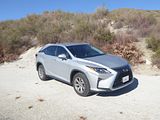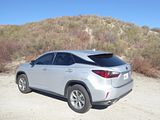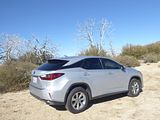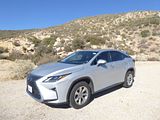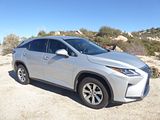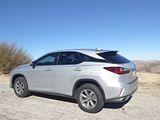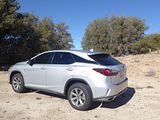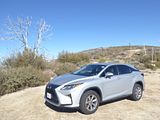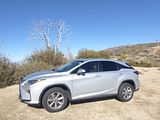When Japanese giant Toyota took the decision to capitalise on the growing demand for more expensive “premium” cars, they figured that it would be an uphill struggle to do so with a brand which was known the world over for its mass-market cars and trucks. So they created Lexus. And the world certainly did stop and take notice as their first product, the Lexus LS400 of 1988, was a remarkable car that bettered the long-established S Class Mercedes in many ways, even without the fact that it was offered for a much lower asking price. Very quickly, the Lexus range started to expand with an array of saloon, coupe and convertible models, only some of which were sold in Europe. And there was probably good reason for this nascent marque to be selective as to which cars to offer Europeans, as despite the good reviews of the early products, sales did not match quite what was hoped for. In America, it was a very different story, though, as the German triumvirate do not have quite the stranglehold there that they do in Europe. So here the dealers and the customers were clamouring for a bigger range. And during the 90s and 00s, that is exactly what was delivered. Lexus made quite a bold move with what is considered to be the first luxury SUV offering, a model based on the Japanese market Toyota Harrier which was first seen in late 1997, at a time when no-one was quite sure how cars like this would sell. To the surprise of no-one, though, that first SUV, known everywhere other than in Japan as the Lexus RX300 did well in America and did actually help raise Lexus sales in Europe, though not by a huge margin. Larger and smaller Lexus SUV models would soon follow, but the RX has remained the most important in the range, and is the model that, on both sides of the Atlantic, achieves the greatest number of sales of all Lexus models. The RX has now been through four model generations, the most recent of which was first seen in 2015. Although it was an all-new design, there was a clear resemblance with the third generation model it replaced, though this one has grown a little in all directions to provide more space inside, and it features the latest technology both to power it, and to make it safe and usable. European sales of the RX peaked some time ago – back in the early 2010s – but US sales have continued to rise with the car finding over 110,000 buyers in 2018 and a similar number in 2019.
Those sales figures make it an important car to test, but that has long proved rather difficult. Despite having large numbers of Toyota models in the US rental fleets, none of them ever seem to have featured Lexus products at all, and indeed the only Lexus cars I have ever rented were in Australia back in 2012 when I did get to sample the third generation RX350 as well as an IS250 saloon. However, in the post-covid era where chip supply issues and the shortage of new cars is making life very hard for rental car purchasing departments, as I have found on this November 2021 trip, all sorts of vehicles are now in fleet that you would not expect to see, many of them having been sourced as low mileage second hand cars. And towards the end of the trip, I spotted a couple of Lexus RX350 parked up at the Hertz LAX facility, so naturally I kept asking if they were available and finally, I got the answer “yes” to a car that I saw literally being parked up, still dripping from the car wash, so not having been on the system for long enough for anyone to allocate it to another customer.
US market customers get the choice of either a petrol or a petrol-hybrid RX, known as the RX350 or RX450h, and sales of the latter are currently around 15% of the total, so in a country where the tax regime does not encourage hybrid technology, petrol remains the market preference. Not surprisingly, therefore, the rental car I collected was an RX350. The RX350 features keyless starting and once the engine is fired you experience that pleasing, distinctive and smooth-sounding V6 note. This is a very refined engine, which never really gets vocal, even when you push the car hard. The five seat RX350 models both have the same 295 bhp 3.5 litre V6 engine, with the seven seater RX350L having 5 bhp less. All of them have an 8 speed automatic transmission. Although that sounds like a decent power output, acceleration is brisk rather genuinely fast, but it is entirely fit for purpose, especially when you consider that this is not a car with sporting pretensions (even in F Sport guise). The transmission is well-matched to the engine and makes particularly smooth gear changes, most of which are hard to detect, though like almost all cars these days, it does have a tendency to get to a high gear and try to stay there. Once at steady cruising speed, noise levels are very low indeed, with road and wind sources as well as suppressed as the note from under the bonnet. I covered 175 miles in my day with the Lexus and put 7.9 US gallons in it to fill it before returning, which calculates to a rather unimpressive 22.15 mpg US or 26.4 mpg Imperial. It is, of course, always possible that the car was “rental full” when I got it and truly full when I returned it.
Driving enthusiasts were clearly far from Lexus’ target customers with the RX350, as from behind the wheel there is no real fun at all to be had. The steering is extremely light and completely devoid of feel. The Lexus is much happier on straight roads than bendy ones, as it understeers pretty readily and any corners tackled with even moderate enthusiasm quickly become a little untidy, although despite some of the wallow, there is actually plenty of grip. The ride is very soft and pliant, with the car running on 235/65 R18 tyres. The result was comfort on almost any road surface, something you rarely experience these days. The brakes proved effective and drama free. Visibility is generally as good as you get in a modern car, which means that there are challenges, though there is a second piece of glass in the driver’s door mirror which does help to reduce the blind spot and the rear-view camera makes parking up a lot easier. There is the usual catalogue of electronic safety features on the car and the Lane Keep Assist system here was as challenging here as it is almost universally. I also got very irritated by a constant series of electronic beeps for no apparent reason.
There is a general air of quality about the interior of the RX350, befitting its market positioning as a premium product. Not only does everything fit well together and build quality appears impeccable but the materials used are nice. There is plenty of leather on the dash, door casings and lining the centre console as well as wrapping the steering wheel. There is some colour contrast with the use of dark gunmetal inlays. The instrument cluster is neat and easy to read, with two large dials for the speedometer and rev counter and smaller ones for fuel level and water temperature. A digital display area offers up various trip computer data points and you can cycle through the various options from the right hand steering wheel spoke. Chunky twin column stalks feature for indicators, lights and wipers, the latter incorporating an auto function, as do the lights. There is an additional stubby right hand stalk for cruise control. Whilst a larger 12” infotainment screen is available in the top spec car, in the entry level model you get a simpler unit with an 8” screen which is perched up high on the top of dash, where it is easy to see. As is still the way with Lexus models, there is a control wheel in the centre console which is not quite as easy to use as rival systems such as the BMW iDrive or Audi MMI, but at least there are still buttons and knobs on the dash for audio functions. The unit includes HD and XM satellite radio as well as a CD slot but you do not get Apple Car Play or Android Auto even as an option. There are 9 speakers and sounds quality from the audio system was good. Below the air vents and rather nice analogue clock are a bank of buttons for the dual zone climate control.
Entry level RX350 models are trimmed with a synthetic leather which does a good job at persuading you it might actually be the real hide of cow. The seats themselves have 10 way electric adjustment including lumbar support, and they move through quite a wide area so everyone ought to be able to find the driving position that works for them. There is an electrically assisted adjustable steering column which telescopes in/out as well as up/down. The test car also featured the optional heated seat function. There is a real feeling of space here, with a lot of headroom and the seats themselves do not feel like they are hemmed into the cockpit at all. They proved to be very comfortable during my day of testing. Add in the low noise levels and pliant ride and this would be a good choice of vehicle for a long journey.
Rear passenger space is reasonable for this size of car. The floor is completely flat, with no central tunnel but the central console unit does protrude quite a way back, so a middle seat occupant may feel a bit short of knee room, but otherwise, there is ample space even if the front seats are set well back, and of course the SUV-styling means that there is a lot of headroom. The seats are on sliders and you can adjust the angle of the backrest. There is a drop-down central armrest with cupholders in the upper surface and occupants here have pockets on the doors and seat-back map pockets for their odds and ends.
The test car featured the optional electrically assisted tailgate, and like most of these systems, it is quite slow, but whilst it is tempting to help it on its way, you do need to resist the temptation to force it. Once fully open there is plenty of clearance for your head as you access the boot space. Pleasingly – but by no means universally with US market cars – there is a load cover to protect the contents of the boot from prying eyes. The boot itself is quite shallow but the floor area is decent, and the load bay is both wide and long, so overall capacity is good, though the raw numbers will tell you that this is one of the smallest capacities of cars in this class. You can create a lot more carrying capacity by dropping the 40:20:40 asymmetrically split rear seat backrests down and the resulting area is flat. Inside the cabin there is ample provision for odds and ends with a good-sized glovebox, door pockets, a central armrest cubby, a recess in front of the gearlever and a lidded cubby over the driver’s left knee.
US buyers can choose between the purely petrol powered RX350 tested here are the hybrid RX450h. The 2019 Lexus RX 350 comes in three trims: base, F-Sport, and the three-row RX L. All three feature the same V6 engine and an eight-speed automatic transmission. Front-rear drive is standard, and all-wheel drive is available. The base model comes with a good number of infotainment and active safety features. When the RX was sold as a new model, most available amenities – including navigation, blind spot monitoring, and a larger infotainment screen – were found in various add-on packages. The base RX 350 comes as standard with synthetic leather upholstery, 10-way power-adjustable front seats, dual-zone automatic climate control, a power liftgate, a leather-trimmed steering wheel and shift knob, a power tilt-and-telescoping steering wheel, proximity keyless entry, and a universal garage door opener. The infotainment system features an 8-inch display screen, two USB ports, a nine-speaker premium stereo, Bluetooth, HD Radio, and satellite radio. Standard driver assistance features include forward collision warning, pedestrian detection, automatic emergency braking, adaptive cruise control, lane departure warning, lane keep assist, automatic high-beam headlights, rain-sensing windshield wipers, and a rearview camera. The seven-seat Lexus RX L adds genuine leather upholstery, tri-zone automatic climate control, and power-folding third-row seats. Options are generally grouped into packages with the RX, but there are a few stand-alone items, too, and availability can depend on the trim level and region in which you live. The Navigation package adds a navigation system, the Remote Touch tech interface, a larger 12.3-inch display, voice controls, the Lexus Enform App Suite and a 12-speaker sound system. Other options include blind-spot monitoring with rear cross-traffic alert and automated braking, a panoramic-view backup camera, either a regular or a panoramic sunroof, heated and ventilated front seats, power-folding second-row seats, a towing package (with an upgraded cooling system), front and rear parking sensors, a hands-free liftgate, upgraded LED headlights (with 18 individual LED accent lights), a colour head-up display, a heated steering wheel and a 15-speaker Mark Levinson sound system. The Premium package is available on non-F Sport models and adds auto-dimming side mirrors, a sunroof, automatic wipers, driver-seat memory functions, leather upholstery, wood trim and a rear armrest storage compartment. The Luxury package (also only available on base models) includes the Premium package items and adds 20-inch wheels, a heated steering wheel, rear door sunshades, upgraded leather upholstery, and four-way lumbar adjustment for the front seats. The F Sport includes the Premium package contents, sportier exterior styling, 20-inch wheels, adaptive suspension dampers, enhanced engine sound, transmission paddle shifters, unique gauges, heated and ventilated sport seats, leather upholstery and unique interior trim. The F Sport is also available with all-wheel drive.
It’s not hard to see the appeal of the RX350. The Lexus ownership experience is second to none, with exemplary levels of reliability and dealers who truly understand customer satisfaction. The car itself is not bad, with plenty of space, a good level of equipment and more than adequate performance. If you are looking for quality and luxury above fun and enjoyment, this could well be the car for you, and the US sales figures prove that this is exactly what plenty of people are seeking. In Europe, it’s a different matter. The fiscal regime makes a pure petrol engine a non-starter, and the RX450h is not cheap even before you take account of finance deals that are some way off what BMW, Audi or Mercedes can offer. Lexus are far from alone in finding this, as the same applies to cars like the Jaguar F Pace and Alfa Stelvio. So, a decent car, in the right market, but lacking the driving sparkle of the Alfa, or the Jaguar, so probably not the car I would pick if there was a line-up of similarly sized alternatives on offer.



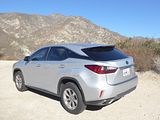

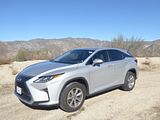


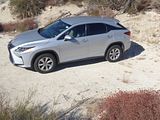












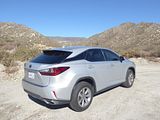
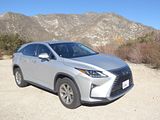
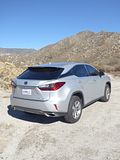
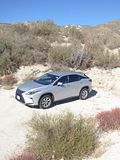

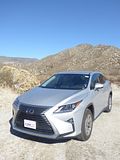








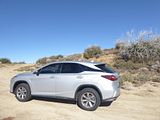

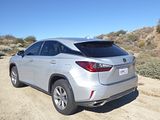



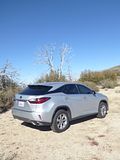
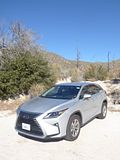

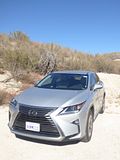

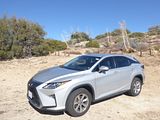
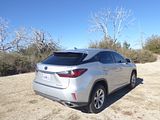
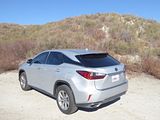



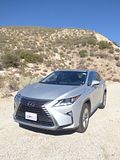




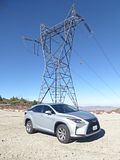

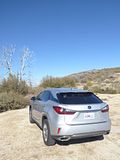
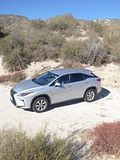
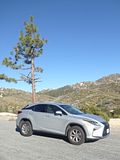






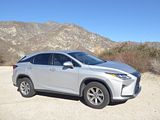


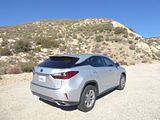

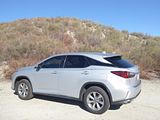
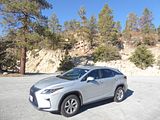
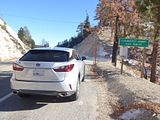
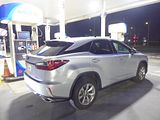



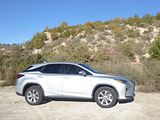



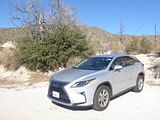
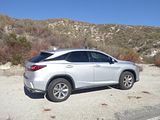

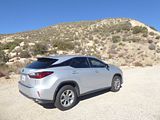

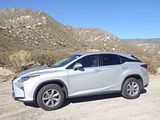
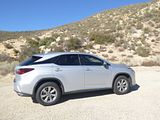

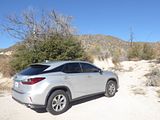

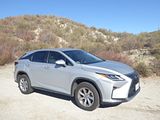
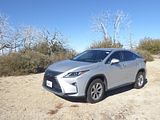

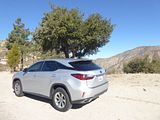
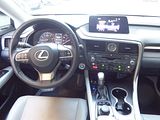
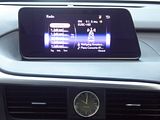


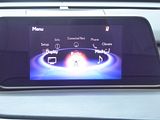


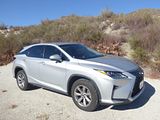


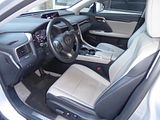
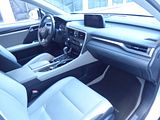
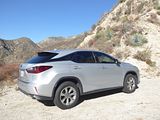




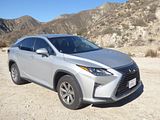


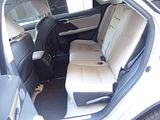
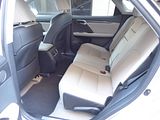

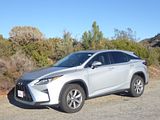
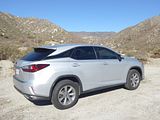



.jpg?width=180&height=120&fit=bounds)

